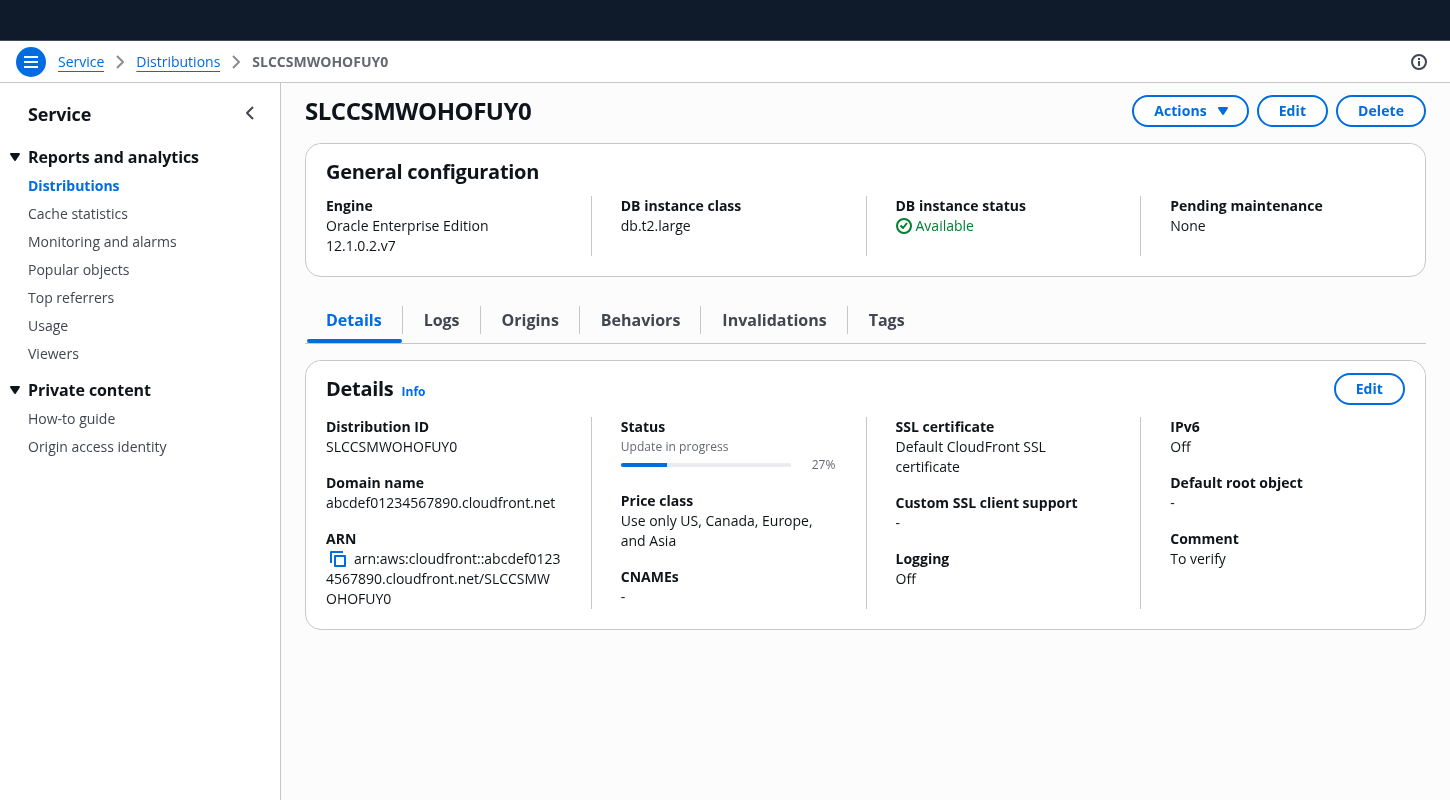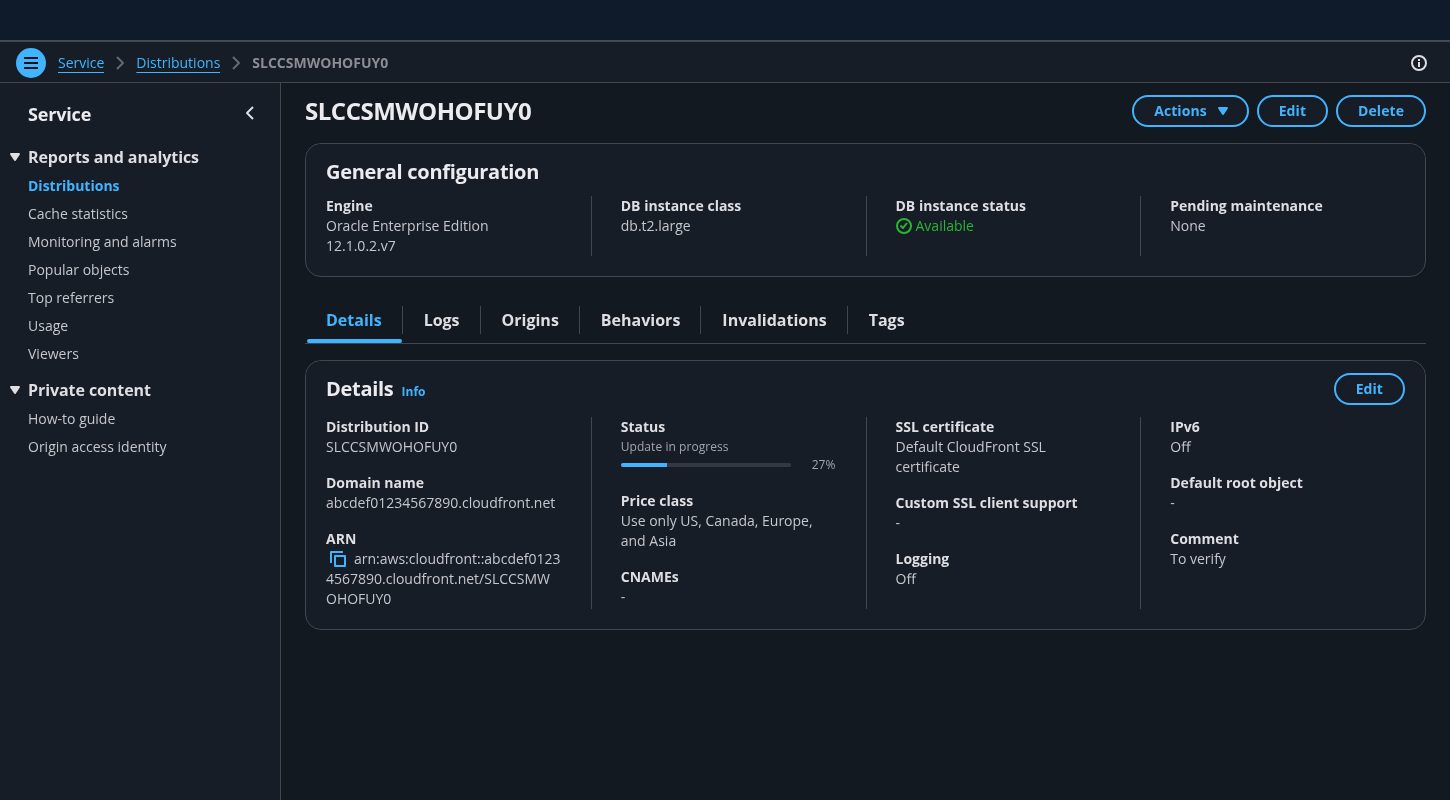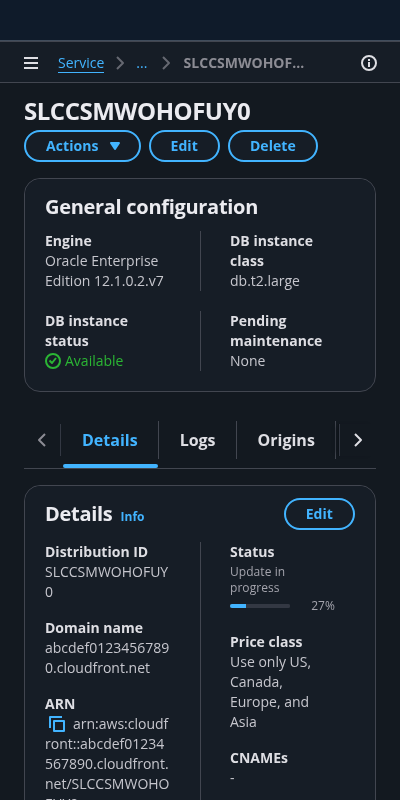Details page with tabs
On this page
Building blocks




A. Breadcrumbs
Follow the guidelines for details page.
B. Page title
Follow the guidelines for details page.
C. Global buttons
Follow the guidelines for details page.
D. Details summary container - optional
Follow the guidelines for details page.
For a details page with tabs, this section serves as a summary that is always visible when users switch between the tabs.
Use it to display important information that applies to tasks in all the tabs.
E. Tabs
Use tabs to organize information about the resource into mutually exclusive, meaningful content groups.
Follow this rule: one tab, one task.
Use tabs to group similar content.
Adjust the sections in tabs to fit the content. Content sections in tabs can have different lengths.
Use multiple containers in content sections to further organize content, as needed.
Arrange the tabs in a logical order: start with the details of the resource, followed by the most frequently accessed information type that supports user tasks.
Examples of content that can be grouped into sections in a single tab: logs, charts, and data visualization for monitoring, key-value pairs, and descriptions.
F. In context buttons - optional
Use when users can perform contextual actions on the page of the tab.
G. Side navigation
Follow the guidelines for details page.
General guidelines
Do
- Use tabs only on details pages.
- Use tabs to organize complex or lengthy content and user tasks into independent, self-contained categories.
- Use tabs to organize discrete but related user tasks.
Don't
- Don't use tabs for hubs, navigation, steps, or containers that link the users to other pages. Instead use the details page as a hub pattern.
- Don't use service names as tabs labels (for example: use Monitoring or Graphs instead of CloudWatch).
- Don't introduce tabs if you can group your content into meaningful sections on a Details page. The number of sections is not an indicator of whether to use tabs.
- Don't use tabs if users need to compare or access information in each tab simultaneously.
- Don't use this pattern if content discoverability is more important than saving space. Prefer a simple details page.
- Don't disable tabs. All content should always be accessible.
- Don't use more than seven tabs.
Writing guidelines
General writing guidelines
Use sentence case, but continue to capitalize proper nouns and brand names correctly in context.
Use end punctuation, except in headers and buttons. Don’t use exclamation points.
Use present-tense verbs and active voice.
Don't use please, thank you, ellipsis (...), ampersand (&), e.g., i.e., or etc. in writing.
Avoid directional language.
For example: use previous not above, use following not below.
Use device-independent language.
For example: use choose or select not click.
Component-specific guidelines
Breadcrumbs, buttons and containers
Follow the guidelines for details page.
Tabs
Follow the general writing guidelines for tabs.